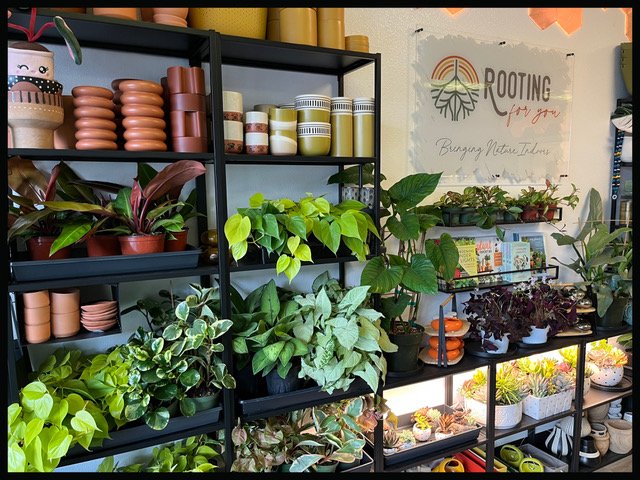How and When to Repot Your Plants: A Simple Guide
Repotting your plants is an essential part of keeping them healthy and thriving. Over time, plants outgrow their containers, deplete nutrients in the soil, and need fresh space to continue flourishing. At Rooting For You, we’re here to guide you through the process with easy-to-follow steps so your plants stay happy in their new homes.
When to Repot Your Plant
Knowing when to repot is just as important as knowing how. Here are some signs it’s time for a new pot:
Roots are growing out of the drainage holes or circling the surface.
The plant dries out quickly, even after thorough watering.
Growth has slowed down despite proper care.
The soil appears compacted or has a white, crusty buildup.
Your plant has become top-heavy or is tipping over.
What You’ll Need
Before you get started, gather these essentials:
A new pot (1–2 inches larger in diameter than the current one)
Fresh, high-quality potting mix
A trowel or small shovel
Scissors or pruning shears (for trimming roots if needed)
A watering can
Optional: Gloves and a drainage tray
Step-by-Step Guide to Repotting
1. Choose the Right Pot
Select a new pot that’s slightly larger than the current one. Avoid going too big, as excess soil can hold too much moisture and lead to root rot. Ensure the pot has drainage holes to prevent water buildup.
2. Prepare the Plant
Water your plant a day before repotting to help ease the transition. This makes it easier to remove from the current pot and minimizes stress.
3. Remove the Plant Carefully
Gently turn the plant sideways and slide it out of the pot. If it’s stuck, tap the sides or use a trowel to loosen the soil. Be careful not to damage the roots.
4. Loosen the Roots
If the roots are tightly wound in a circular pattern, gently tease them apart with your fingers. If necessary, trim overly long or dead roots with clean scissors to encourage new growth.
5. Add Fresh Soil
Place a layer of fresh potting mix at the bottom of the new pot. This provides a nutrient-rich foundation for your plant.
6. Replant and Fill In
Position your plant in the center of the new pot and fill in around it with fresh soil, pressing gently to remove air pockets. Leave about an inch of space at the top for watering.
7. Water Thoroughly
After repotting, give your plant a deep watering to help it settle into its new home. This encourages roots to spread and adjust to the fresh soil.
8. Post-Repotting Care
Place your plant in a spot with similar light conditions as before. Avoid fertilizing for about a month to let the roots adjust. Keep an eye on watering—your plant may need a little extra hydration as it settles in.


